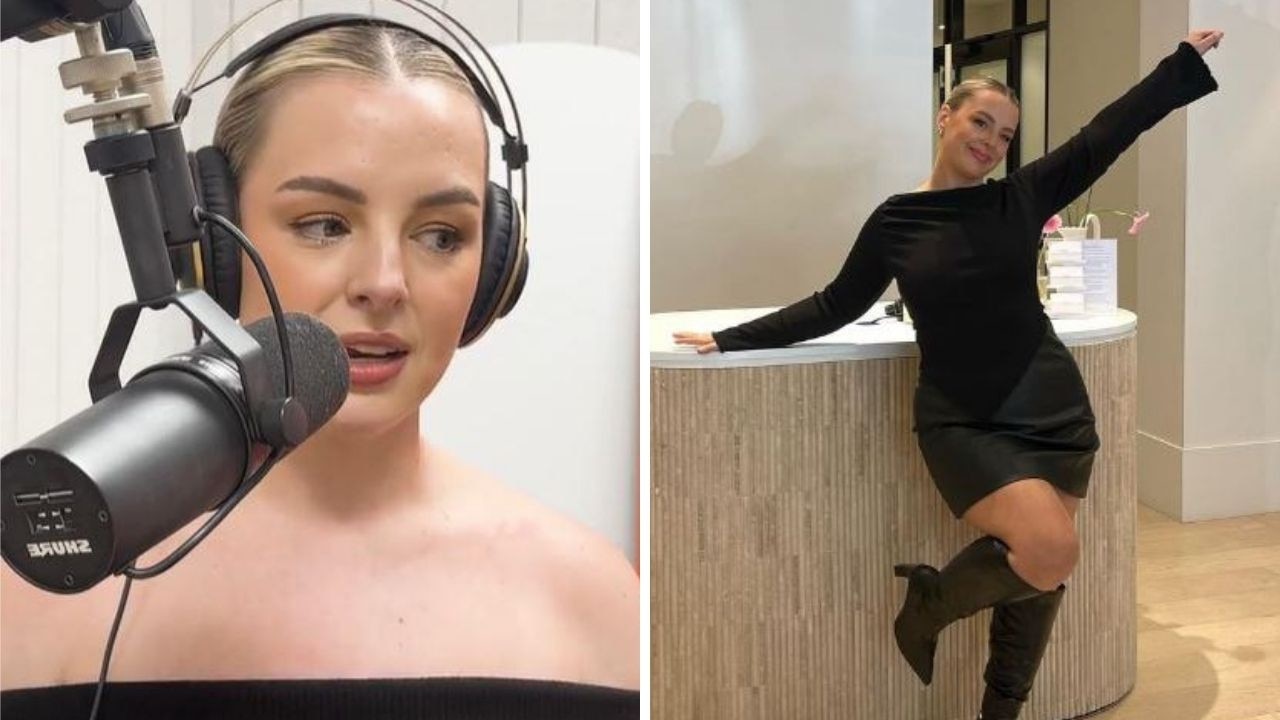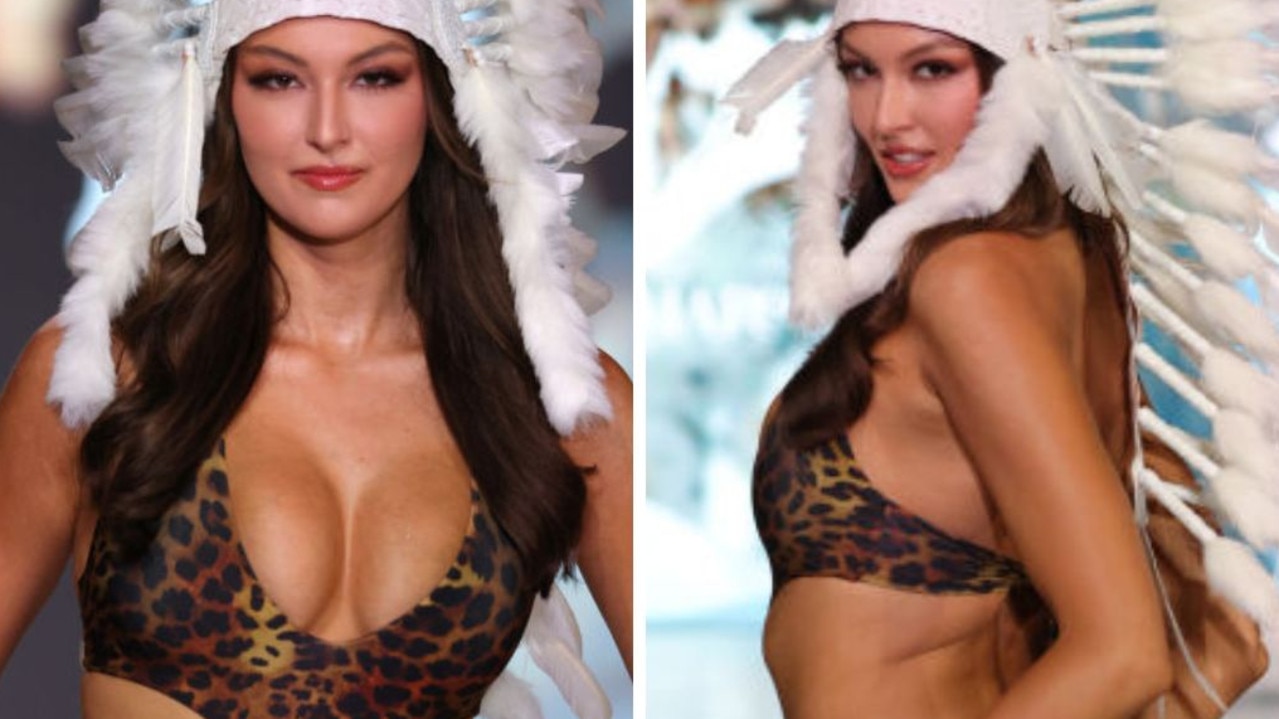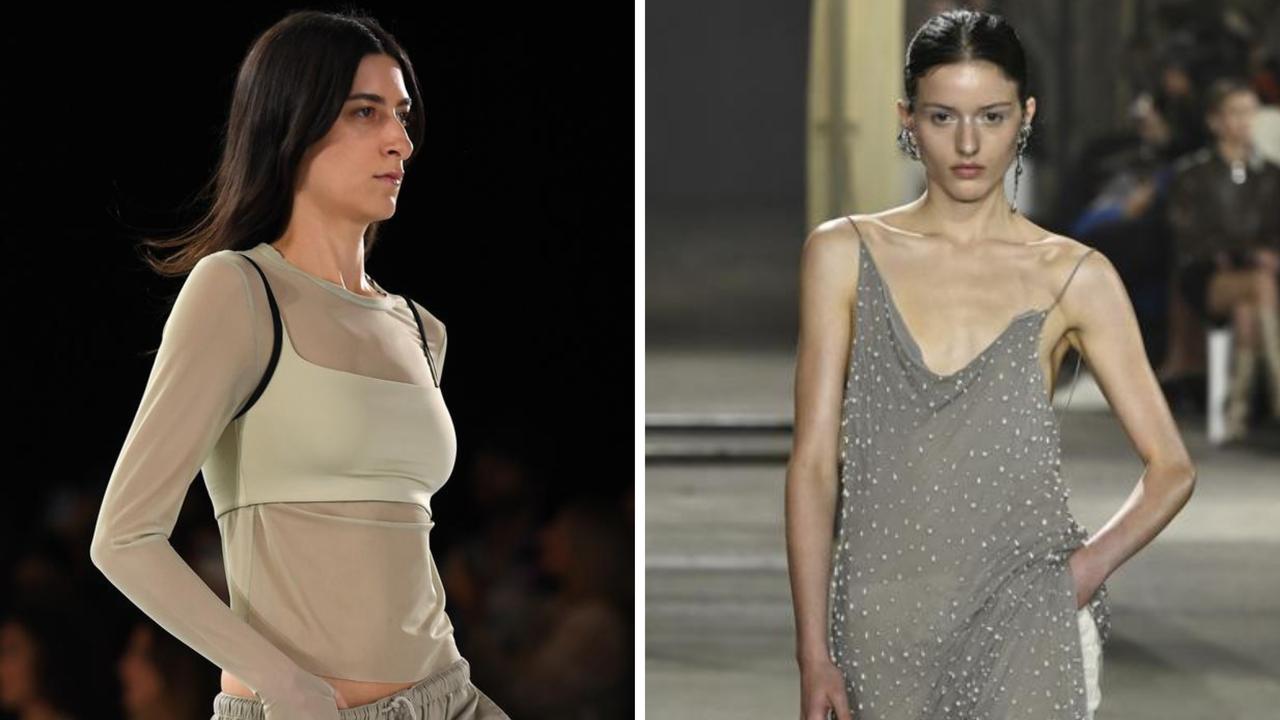The big lie of New York fashion week
Insiders have declared it dead, but the glamorous event still maintains an elite hierarchy that leaves outsiders desperate for access.
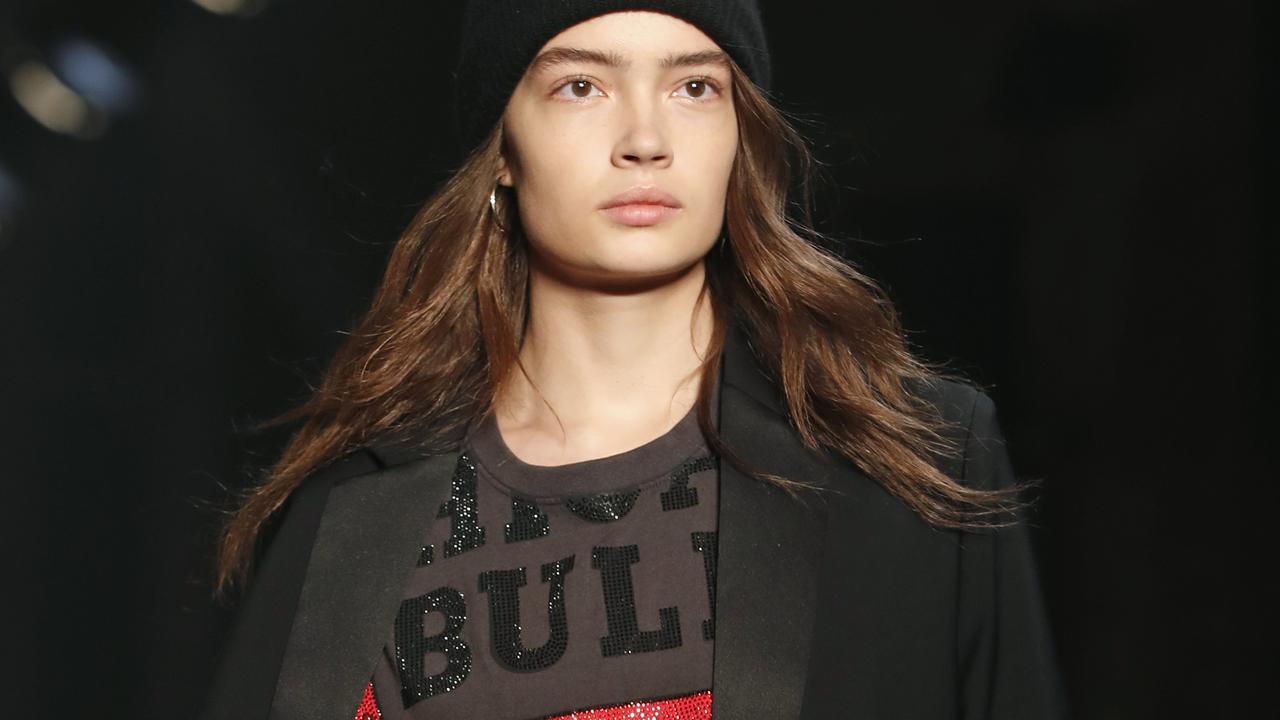
“But I have a ticket,” a woman pleads with the stern-looking glamazons dressed in black and holding clipboards.
“Yeah, that’s great, but if you don’t have seating assignment, you have to wait in line,” comes the reply.
Moments later, we learn that those of us who are still queuing for this much-hyped menswear show with our sad, non-assigned, standing tickets, will not get in at all. The venue has reached capacity. One woman says she has travelled for three hours to see her son model in the show. The glamazons are unmoved.
This is my introduction to New York fashion week: standing for 40 minutes on the freezing cold pier jutting out over the East River for the privilege of peering through clear plastic windows of a marquee for a glimpse of the runway.
“We’re like fashion groupies,” one man laughs. I can only feel impressed at how well the industry has maintained its famous froideur.
Because the word on the street is that fashion week is well and truly dead. The slow-burn seasons of old are becoming blurred, with “buy now” options and high street interpretations hitting stores almost immediately.
Trends filter out from influencers or celebrities to the public within seconds on social media, and major designers are skipping traditional runway shows altogether.
“Fashion week is becoming more and more irrelevant, like a lot of brands aren’t showing any more or they’re showing at different times of the year so I don’t know, it feels quieter,” says Mary Gui, a New York influencer known as @layersofchic.
“Before, fashion week was so exclusive, like only the editors could go, but now it’s like even a smaller influencer can go to fashion week, so maybe it’s just becoming more and more diluted.”
RISE OF THE ‘NOBODIES’
Victoria Beckham and Givenchy are among the big names notably absent from the city’s Fall/Winter 2019 shows this February.
In place of extravagant shows that can cost hundreds of thousands of dollars, designers including Leanne Marshall are releasing collections on Instagram while others have turned to smaller, experimental viewings in unusual locations, such as science labs.
Fashion week has lost its relevance to how many of us shop, and the social media age has ushered in new ways of finding success in a historically elitist world.
But the allure of the catwalk hasn’t disappeared, as the apparent democratisation of fashion elevates ordinary people armed with only an iPhone to celebrity status. Whether the old guard prefers to keep them out in the cold, these social media stars are keeping fashion week alive.
“I think influencers, if anything, bring fashion week more to the forefront to regular consumers, because they kind of get to see what we’re seeing,” says Mary.
Dominique Lewis, one half of @thestylish.duo with his twin brother Devin, says he has faced some snobbery from the establishment, but he doesn’t let it bother him.
“Agencies — I don’t want to say they look down on you, but they do kinda, in a way,” he tells news.com.au. “It’s like, ‘Oh, he’s nobody’, which, I run into that a lot, but it’s whatever, I don’t really take it personal.”
The twins have been able to quit their jobs and make a living sharing their looks and posting content for the likes of Reebok, Express, Sunglass Hut, Ray Ban. It’s not easy to make it in the now saturated world of influencers. Dominique says there “definitely is a lot of competition here in New York” but the key is to stand out.
“You just have to differentiate yourself,” says the 25-year-old. “Being a twin, that sets you apart … when we go to shows or anything, or like posts, we try to dress alike or similar and, like, draw more attention.
“Breaking into the influencer world, it does require a lot of patience and consistency … Nothing happens overnight, it literally took me like four years to get to where I’m at and I’m not even at the place where I want to be.”
‘THEY’RE NOT WALKING THE SHOWS ANY MORE’
Hailey Bieber materialises from backstage just before the start of French label Zadig and Voltaire’s show, emerging with her hair tucked into a bright pink jumper and is immediately mobbed by photographers, who sprint the length of the catwalk to get that all-important photo.
The 22-year-old model, who has appeared in a campaign for the label, is the name on everyone’s lips right now after secretly marrying Justin Bieber in September and giving an eye-opening interview to Vogue with her new husband last week. And this appearance in the front row for a cool, grungy brand is carefully calculated.
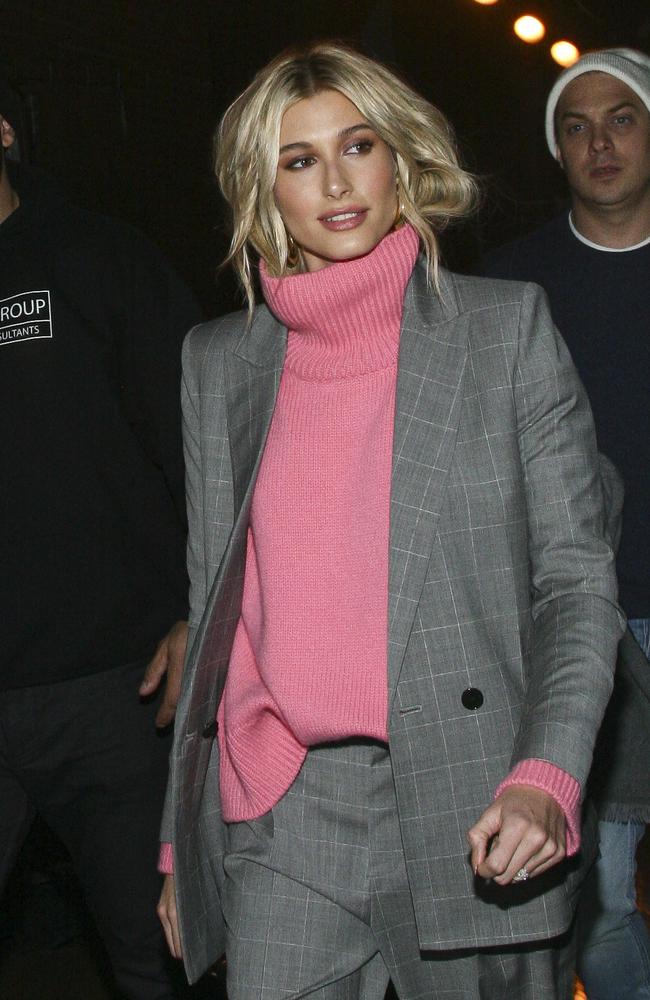
“That’s kind of what it’s all about, you’re expecting the media to go crazy for you,” says producer Nicole. “You let people know that you’re coming to a show, or media anyway, there’s a media notification that goes out, ‘you want to cover this event because so-and-so’s going to be there.’
“That’s why so many designers try to get people, and it’s funny because more and more models are sitting front row, and it’s models who are social media models or the models of the moment, where they’re not walking the shows any more, they’re sitting at the shows, because it draws so much appeal and everybody wants to be a part of that.”
Brittany Horner, a 20-year-old student from Ohio studying at New York’s Fashion Institute, says star power is stronger than ever, but the line between celebrities and influencers is fading. “People our age are looking more and more towards Instagram and influencers because it’s free, it’s right at our fingertips, and we just really trust these people,” she tells news.com.au. “A lot of these people, we’ve seen them start from having 500 followers to having this many followers now … we trust them because we’ve seen them grow.
“Celebrities nowadays are like influencers, we’re looking to them for what to wear and who they’re wearing, especially at events like the Grammys.”

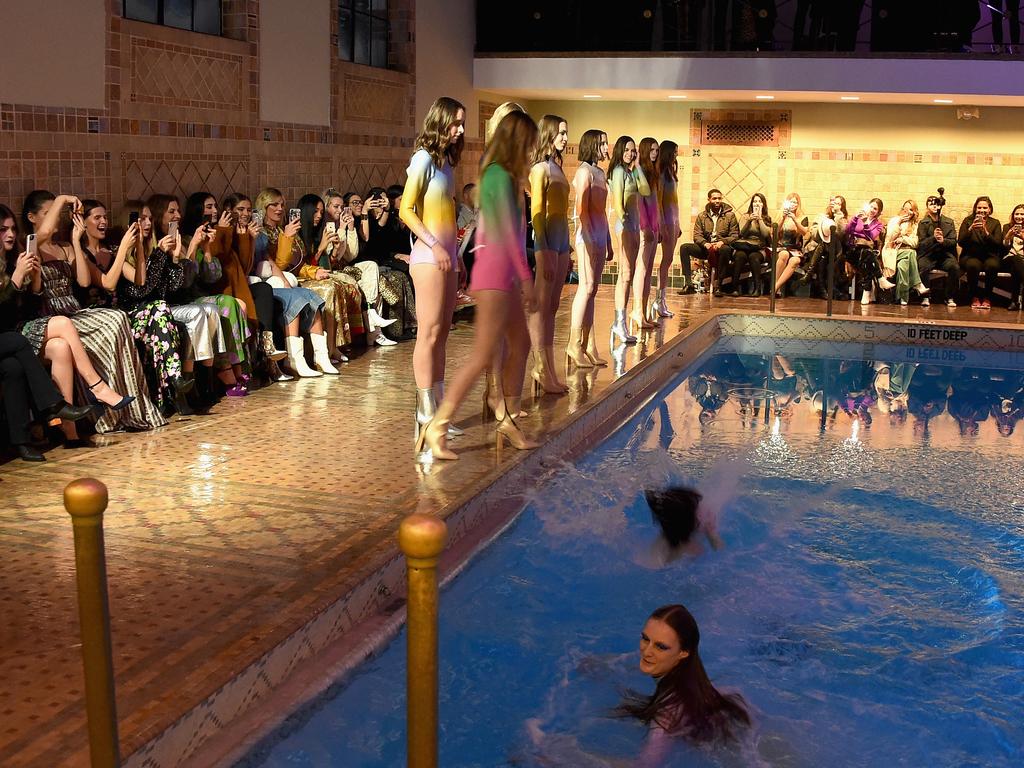
Brittany, who worked at the Christian Siriano show at the top of the Rockefeller Center, says the “iconic” sight of size-16 supermodel Ashley Graham closing the show in a sheer silver dress “took my breath away”.
It’s moments like these — played out in front of a “frow” featuring Debra Messing, Christina Hendricks and Christina Ricci — that matter now. “I think the artists are taking, like, bigger steps out, they’re just experimenting a lot more and they’re looking towards the future which is really cool,” says Brittany.
We are talking in the gallery overlooking the Cynthia Rowley show, staged at a public swimming pool. As if to prove her point, the models wearing multi-coloured bodysuits jump into the pool at the end to loud cheers and swim across in the eerie light. It has all the magic and theatre that fashion kids dream about.
‘MEET US IN THE BAHAMAS’
The business of fashion is changing, but its sense of glamour and excitement still feels very much alive. While it’s relatively easy to gain access to the lesser-known designers’ shows, getting into the smaller, hot-ticket shows by the top brands is still a challenge if you don’t know the right people.
What has changed is the importance of the outsiders. While the industry may want to maintain its hierarchy and mystique, digital natives are pushing the envelope and breaking down walls by communicating directly with their audience.
And fashion’s elite want a piece of the pie, with more brands building their reputation through influencers.
“It’s almost like an evolution to creating that kind of ultimate relationship with the influencer,” says Jonathan Kroopf, from tech company Creator IQ, during an Influencers Unscripted panel discussion at fashion week.
The event, hosted by Fashion Mingle and the American Influencer Association, is packed with representatives from fashion and tech start-ups, and fledging brands who want to harness the power of influencers as a different route into the fashion world.
Jonathan, whose firm helps brands build an influencer network, explains that there are three levels to making it work. “You seed some product and you’re getting some posts and it’s working,” he says. “But you only have so much product and the influencers only care so much, so you have to take it up another level.
“And then we see brands trying to create experiences. So now all of a sudden they’re like, come meet us in the Bahamas, or come to our Hamptons house, and influencers are excited about that because it’s an opportunity to create content.
“The holy grail on the third tier, and what we’ve seen with a brand called Ipsy, they’ve got a 1500-person network of influencers who they don’t pay anything but they invest in experiences, and what they’ve done is they’ve built community … Revolve has their own awards that influencers will show up to and not get paid because they’ve created this level of prestige.”
Sylvia Banni, an Italian who runs a global fashion start-up called ShareMyBag, says her goal is to network with people who aren’t at the topmost rung of the ladder at New York fashion week. “I don’t design fashion products but our pages — especially on social media — they have fashion inspirations, so we need to know about trends and we want to talk about it.
“I think this sharing of content, it’s very interesting because you meet influencers, bloggers … I see more these type of people joining the fashion week. Both influencers but also people who want to talk about their trends, their fashion shows that aren’t necessarily in magazines.
“It’s always something of an evolution, it’s something very inspiring and dynamic.”
Sylvia’s “Airbnb for clothes”, which allows women to share their wardrobe, has just gone live globally, but she’s chosen to launch in New York because “it is the most important city in the world, it’s in the US but has a window to the world”.
It seems fashion week isn’t dead, it’s just reinventing itself.

